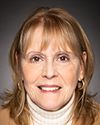Kwe kwe, ullukkut, tansi, hello, good morning.
Mr. Chair, I'd like to acknowledge that I am speaking to you today from Treaty 6 territory in Edmonton, the traditional territory for many indigenous peoples, in particular the Cree, Saulteaux, Niitsitapi, Blackfoot, Métis and Nakota Sioux.
I'm supported by my senior officials from the department, as well as by my colleague, associate deputy minister of Indigenous Services Canada, Valerie Gideon. We will be available to answer questions on many mental health and other health supports.
I would like to begin by paying tribute to survivors of residential schools, their families and their communities, and by acknowledging the ongoing impact of intergenerational trauma.
Today, our hearts are with the Tk'emlúps te Secwepemc people, survivors, families and indigenous communities across Turtle Island as they grieve the loss of these innocent children.
Tragically, the gravesite in Kamloops isn't an isolated case. The Truth and Reconciliation Commission documented more than 4,100 deaths of residential school students across the country. There are other known cases of unmarked graves across the country, and many more—thousands, even—will be located. This is the grim reality of residential schools.
As we reflect on this loss, we must acknowledge that this isn't a purely historical event. There are parents who are still living and who lost children, maybe even amongst those found in Kamloops.
There are surviving brothers, sisters, nieces, nephews and other family members who will be wondering if their loved ones are among those who have been located. We are resolved to follow the wishes of communities and offer support, as needed, to those affected, and to memorialize those innocent souls.
The recent events in Kamloops remind us about the importance of acknowledging the legacy of residential schools and their tragic impact on first nations, Inuit and Métis peoples. It is difficult to imagine the pain suffered by so many indigenous children and their families and communities. It is said that one of the children found at the Kamloops residential school may have been as young as three years old—a life that was stolen and likely buried without a proper ceremony. It's disturbing, and it should never have happened, but it did.
Many students who went to residential school never returned. They were lost to their families. They died at rates far higher than those experienced by the general school-aged population. Their parents were often not informed of their sickness and death. They were buried, away from their families, in long-neglected graves.
Although it is painful, we need to continue to search for answers. Canadians have a responsibility to know the history and legacy of residential schools, and to honour residential school survivors, their families and communities.
Archaeological and historical research was conducted about potential gravesites and cemeteries at former residential school sites across Canada in advance of the Truth and Reconciliation Commission hearings. All available federal-related records were turned over to the TRC. The National Centre for Truth and Reconciliation now houses the reports on the deaths of students. As technology evolves, it is likely that other burial sites will be uncovered.
Identifying burial locations of children who died while attending residential schools is fundamental to providing closure for families. Significant progress is being made with the Truth and Reconciliation Commission's 94 calls to action. Approximately 80% of the calls to action under the sole or shared responsibility of the federal government are completed or well under way.
We know that we can do better. Indeed, we must. Collectively, we must chart a new path toward a Canada that honours, respects and is fully inclusive for first nations, Inuit and Métis peoples. Renewed relationships are fundamental to the growth and prosperity of our country.
Meegwetch, qujannamiik, marci, thank you.




